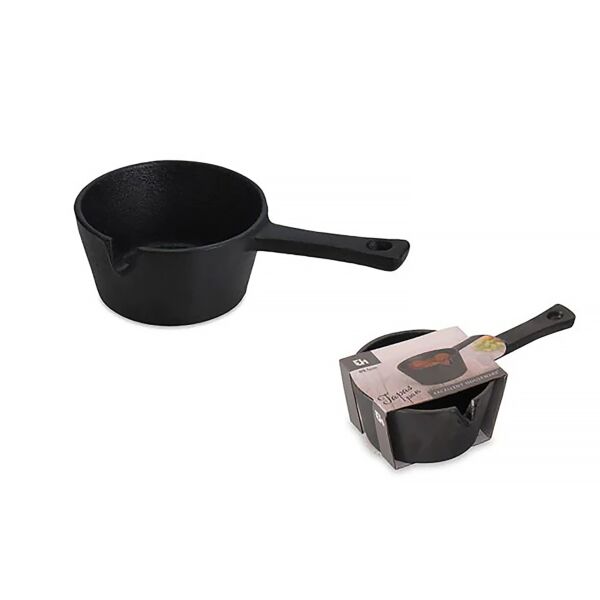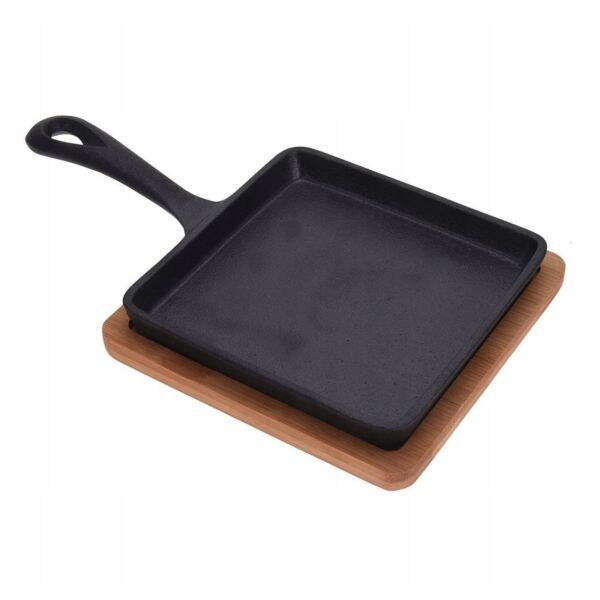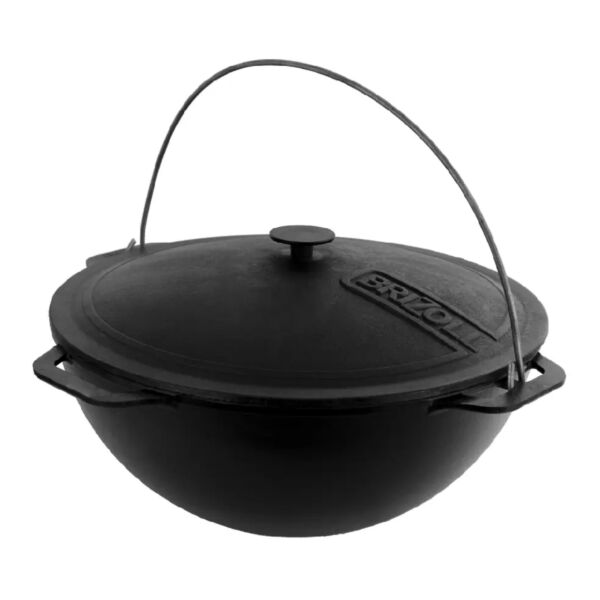Bestsellers
Why cast iron?
When non-stick and ceramic cookware appeared on the world`s market, not many people thought that cast iron cookware will still remain popular. However, only the cast iron cookware creates that special classic, juicy dish taste. For this reason many classy restaurants still use cast iron cookware to create their culinary masterpieces.
Consider several benefits of cast-iron usage- Cast iron is an environmentally friendly material that is completely safe for the human health. There are no toxic chemical processes involved in manufacturing cast iron cookware. Cast iron cookware does not have a non-stick surface originally; such a layer appears on the surface during cooking processes.
- Cast iron is extremely durable and can be used for decades because it is very difficult to damage, as long as it is thorough cleaned and heated to remove the drops of water from its surface.
- Cast iron has a porous structure, which helps it to heat up very slowly. At the same time, cast iron retains heat well, evenly distributing heat over the entire surface. It also provides higher temperatures than aluminum and steel.
- Cast iron cookware is suitable for both gas and electric ranges. You can fry and bake your food in an oven with your cast iron cookware.
- Food usually does not stick to cast iron cookware. Instead, it gets steamed from all the sides, adding a very special taste, while remaing juicy.
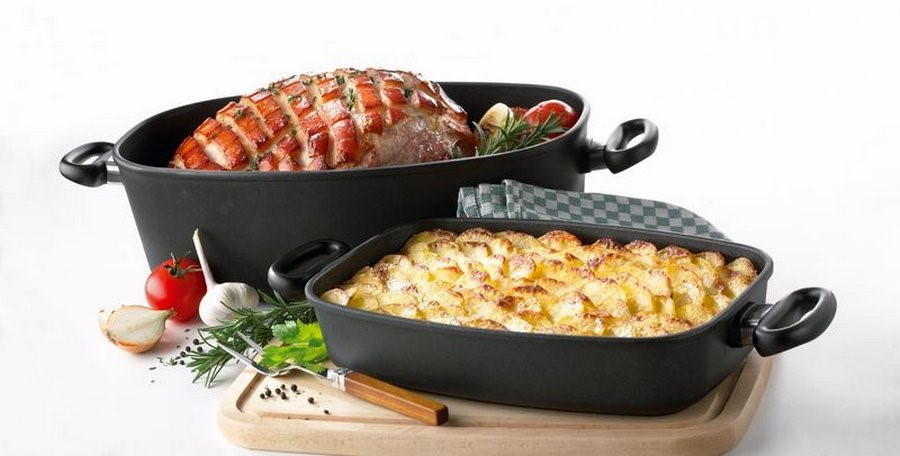
Unfortunately, cast iron cookware is considered to have the largest weight. An average cast iron frying pan weights 2 kilograms. Because of a porous structure and heavy weight, dropping a frying pan may easily lead to cracks or breakage into pieces. Cracks do not make cast iron toxic; however, food will stick to the surface. You need to find a special place to store heavy cast iron cookware.
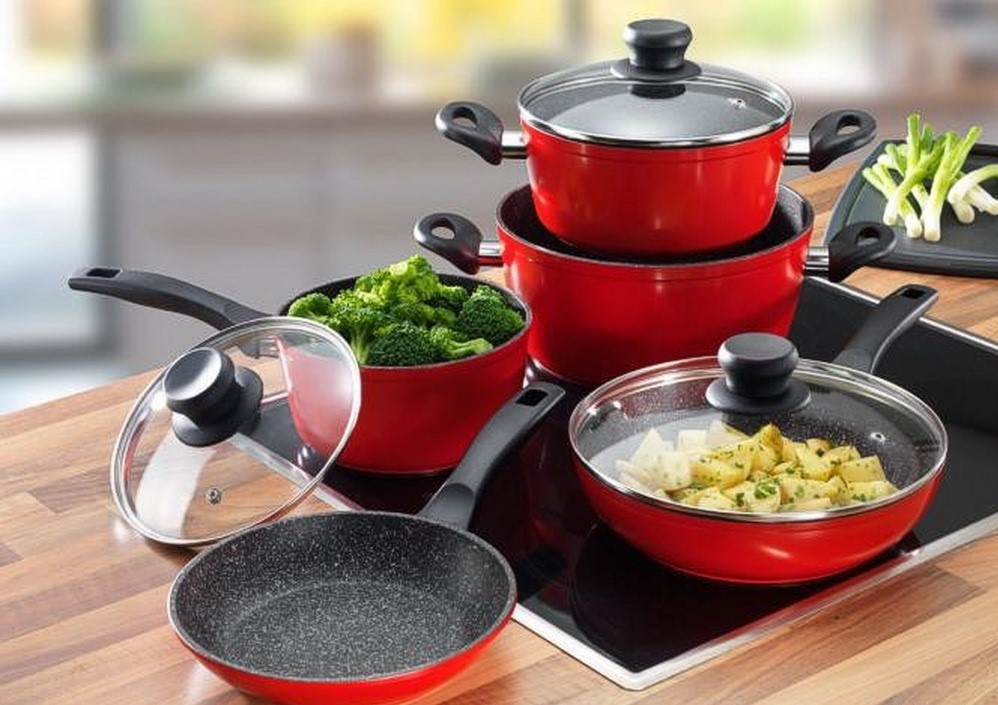
How to choose the right cast iron cookware?
- First of all, you need to decide how you are going to use your cookware. On the one hand, you may use the same cast iron pan for frying eggs, steaming meat and baking pancakes. However, professional cooks will advise you not to use the same item for different purposes. This will help you to make your cast iron items more last longer. You should use a thin cast iron pan to fry pancakes and crepes. To grill meat you need to use a thick frying pan with a riffled bottom and a lid. Buy cast iron cookware with handles and a lid to roast your food.
- Choose your cast iron type.
- Regular cast iron is perfect for cooking. However, is not a good choice to store food, because cast iron will oxidize and rust.
- Enameled cast iron cookware items are completely covered with an enamel layer. Enameled cast iron cookware looks better and has a colorful custom design. This type of cast iron cookware can be used to storefood. However, enameled cast iron cookware is easy to damage because of a thin and fragile enamel cover.
How to check your cast iron item
It is important to choose a cast iron cookware item with no defects. Before buying a cast iron item, examine it carefully and find out if there are any cracks on the surface. The cookware items should be well-polished and have a smooth surface, because these will develop into cracks during use.
Cast Iron Versatility
Cast iron cookware is extremely versatile: you can cook almost any kind of food in cast iron pans and pots. It is used for baking, searing, frying, braising and roasting. Cast iron actually works with any heat source, you can use a cast iron pot on a stove top, in the oven or even on a campfire. It also has the ability to maintain heat and moisture longer.
Cast Iron Health Benefits
Compared with other types of cast iron cookware, no chemicals are leached into food. Cast iron cookware instead emits a small amount of iron into food, providing you with additional nutrients to help produce red blood cells and prevent anemia. Cast iron skillets and pans naturally have a non-stick cooking surface, so you don't have to use a lot of oil. A cast iron platter will become even more non-stick over time, as it absorbs the oils used to cook previous plates.
Cast Iron Heat Capacity
Cooks and chefs worldwide choose cast iron cookware for their restaurants because cast iron pans and casseroles heat much more evenly than thinner material pans. It also can withstand high temperatures and keep the heat long after it is removed from the heat source, leaving you with less energy.
Cast Iron Durability
Cast iron lasts a lifetime. In comparison to most non - stick or stainless steel pans, it's maintenance is relatively easy. Cast iron pans will last for decades and still work perfectly as long as you season them before use and if you use them properly.
How to Clean Cast Iron?
While some manufacturers claim that their cast iron cookware is dishwasher-safe, it is better to wash the pots and pans by hand. You should wipe away any bits of food every time you use your cast iron dish. Use a stiff brush or plastic scrubber under running water to clean while it's still warm, but cool enough for easy handling. You can use a small amount of soap. If the crud is a little too a thick for the brush, try to toss a handful of salt and scrub it with a dish rag. Salt acts as an abrasive and helps to remove the bits without damaging the surface of the pan. Once you have you washed and thoroughly rinsed your pan, you should immediately dry it completely. Do not "air dry" and use a towel to wipe it or place the cast iron on the stove and heat over medium-low heat to ensure that it is completely dry. Store it in a dry, cool place.
How to season cast iron cookware?
Seasoning in this context has nothing to do with salt and pepper. Seasoning a pan or skillet of cast iron means forming a thin layer or fat coating that protects the surface of cast iron. When fat is heated in cast iron, it is polymerized, which means that the fat becomes a plastic-like layer that protects the metal in the simplest possible terms and creates a non - stick surface. Seasoning prevents rust and provides a natural, easy - to - release finish that keeps on improving. The more you use the pot, the more seasoned it becomes.
To season your new cast iron pan follow these simple steps.
When you buy a new cast iron skillet or pan, in most cases they come with a pre-existing layer of seasoning. However you should still season your cast iron cookware to make sure it is well protected and well-seasoned. After seasoning your new cast iron cookware you will have it for life.
Step 1. Clean and Dry
You will always want to wash your new cast iron pan when you take it out of the box. Give the pan a good wash under warm running water using a soapy brush, and rinse it well after that. Wipe down the clean cast iron surface with a towel or paper towel, making sure all the moisture is gone to avoid rust.
Step 2. Lubricate the entire surface
Once your cast iron pan is clean and dry, apply a very thin layer of fat or oil to the entire surface of your pan - including the outside surface, sides and handle, not missing any spot. The key is to buff the fat thoroughly so that the skillet or pan does not look too shiny or greasy. You can use vegetable oil, coconut oil, avocado oil, flaxseed oil, bacon fat or lard.
Step 3. Heat it up
After you have wiped off any excess oil or fat, place the pan in your oven, pre-heated to 450°F. Bake the cast iron pan for one hour. Keep your kitchen ventilated, as it can get smoky. During this process the oil layer thickens, turning into a protective coating. It is necessary to use an oven instead of a stove top, as an oven provides better and even heat, making the seasoning more effective. After an hour turn the oven off and allow your cast iron dish to cool completely. Optionally, you can repeat the heating and cooling process 1-2 more times over the course of the day to ensure effectiveness.






